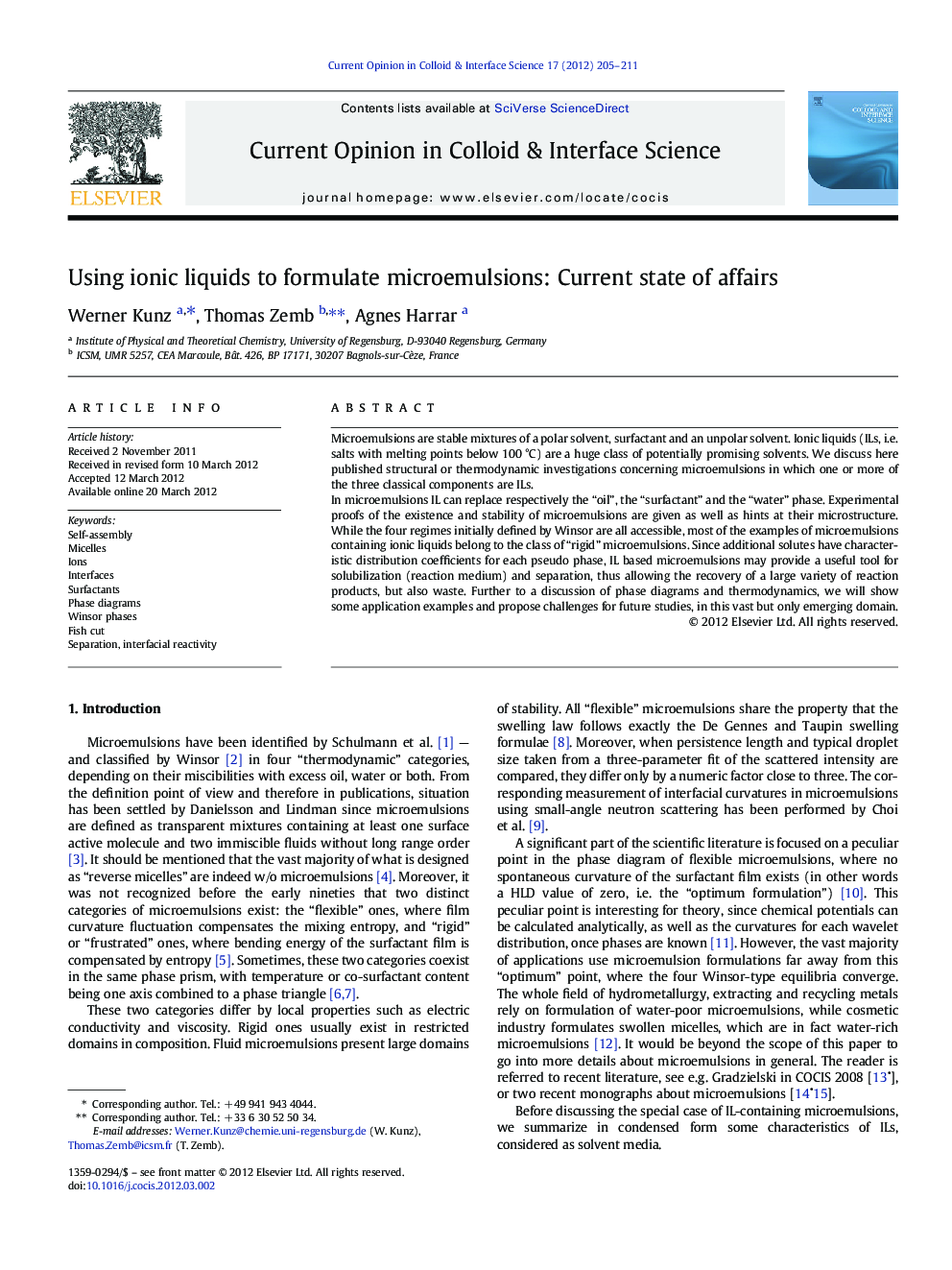| Article ID | Journal | Published Year | Pages | File Type |
|---|---|---|---|---|
| 603402 | Current Opinion in Colloid & Interface Science | 2012 | 7 Pages |
Microemulsions are stable mixtures of a polar solvent, surfactant and an unpolar solvent. Ionic liquids (ILs, i.e. salts with melting points below 100 °C) are a huge class of potentially promising solvents. We discuss here published structural or thermodynamic investigations concerning microemulsions in which one or more of the three classical components are ILs.In microemulsions IL can replace respectively the “oil”, the “surfactant” and the “water” phase. Experimental proofs of the existence and stability of microemulsions are given as well as hints at their microstructure. While the four regimes initially defined by Winsor are all accessible, most of the examples of microemulsions containing ionic liquids belong to the class of “rigid” microemulsions. Since additional solutes have characteristic distribution coefficients for each pseudo phase, IL based microemulsions may provide a useful tool for solubilization (reaction medium) and separation, thus allowing the recovery of a large variety of reaction products, but also waste. Further to a discussion of phase diagrams and thermodynamics, we will show some application examples and propose challenges for future studies, in this vast but only emerging domain.
Graphical abstractSmall angle neutron scattering data of microemulsions containing 6 wt.% ethylammonium nitrate, 40 wt.% surfactant + cosurfactant ([C16mim][Cl] + decanol mixture (1:4, molar ratio) and 54 wt.% [D26]dodecane at different temperatures.Figure optionsDownload full-size imageDownload high-quality image (69 K)Download as PowerPoint slideHighlights► Critical review of newest developments in the field. ► Critical review of possible applications. ► Discussion of cat-anionic interfacial films as two-dimensional Ionic Liquids
